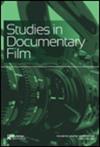A review of the Arhythmacanthidae (Acanthocephala) in Australia with the descriptions of a new genus and 6 new species
IF 0.8
4区 综合性期刊
Q3 MULTIDISCIPLINARY SCIENCES
Transactions of the Royal Society of South Australia
Pub Date : 2022-11-25
DOI:10.1080/03721426.2022.2141867
引用次数: 0
Abstract
ABSTRACT Twenty-eight Australian fish species were infected with 18 taxa of Arhythmacanthidae; 11 characterised to species, 4 to genus and 3 to family. Diagnoses are provided for the genera Heterosentis, Hypoechinorhynchus, Paracanthocephaloides and Yamagutirhynchus n. gen. Heterosentis has four Australian species: H. hirsutus Pichelin & Cribb, 1999, H. paraplagusarium (Nickol, 1972), H. plotosi Yamaguti, 1935, H. lisitsynae n. sp., defined by a proboscis armature of 14–16 rows of 8–9 hooks, 4 large, 4–5 spiniform, and three indeterminate species, two from Western Australia, one from Queensland. Hypoechinorhynchus is represented by Hy. robustus Pichelin, 1999 and Hy. alaeopis Yamaguti, 1939. Paracanthocephaloides is represented in Australia by one indeterminate species and three new species: P. bartonae n. sp. has an armature of 14–16 rows of 3 large, 7 spiniform hooks; P. hustoni n. sp. 12 rows of 5–6 hooks, 2 large, 3–4 spiniform; P. shamsiae n. sp. 12 rows of 5–6 hooks, 2 large, 3–4 spiniform. Paracanthocephaloides cabelleroi (Guptar & Fatma, 1983) is returned to the genus Heterosentis. Paracanthocephaloides golvani Chandra, Hanumantha-Rao & Shyamasundari, 1984 is moved to the genus Gorgorhynchoides as G. golvani n. comb. Yamagutirhynchus n. gen. has a cylindrical proboscis with an expanded middle region. Yamagutirhynchus lymberyi n. sp. and Y. elliotae n. sp. both have proboscis armatures of 10 rows of 4–5 hooks; for Y. lymberyi the largest hooks are 42.5 μm long; for Y. elliotae, 51 μm.文章题目澳大利亚棘头蚁科研究进展及一新属和六新种
摘要澳大利亚28种鱼类感染了18个虫科;11个特征为种,4个特征为属,3个特征为科。Heterosentis属,Hypoechinorhynchus, Paracanthocephaloides和Yamagutirhynchus n. . . Heterosentis在澳大利亚有4个种:H. hirsutus Pichelin & Cribb, 1999年,H. paraplagusarium (Nickol, 1972年),H. plotosi Yamaguti, 1935年,H. lisitsynae n. sp.,由14-16排8-9个钩组成的喙环定义,4个大的,4 - 5个刺状,还有3个不确定的种,两个来自西澳大利亚,一个来自昆士兰。低颈喙龙的代表是Hy. robustus Pichelin, 1999和Hy. alaeopis Yamaguti, 1939。Paracanthocephaloides在澳大利亚有一个不确定种和三个新种:P. bartonae n. sp.有一个14-16排的3个大的,7个刺状的钩的枢枢;12排,5-6个钩,2个大,3-4个刺状;三叶草n. sp. 12排5-6钩,2大,3-4刺状。Paracanthocephaloides cabelleroi (gupta & Fatma, 1983)回归到Heterosentis属。Paracanthocephaloides golvani Chandra, Hanumantha-Rao & Shyamasundari, 1984年将其归入goorgorhynchoides属,命名为g.g olvani n. comb。山魈的喙呈圆柱形,中间区域扩大。Yamagutirhynchus lyberyi n. sp.和yellotae n. sp.都有10排4-5钩的喙部;lyberyi的最大钩长42.5 μm;对于Y. elliotae,温度为51 μm。
本文章由计算机程序翻译,如有差异,请以英文原文为准。
求助全文
约1分钟内获得全文
求助全文
来源期刊
CiteScore
1.40
自引率
12.50%
发文量
17
审稿时长
>12 weeks
期刊介绍:
Published since 1880, the Transactions of the Royal Society of South Australia is a multidisciplinary journal that aims to publish high quality, peer-reviewed papers of particular relevance to Australasia.
There is a particular focus on natural history topics such as: botany, zoology, geology, geomorphology, palaeontology, meteorology, geophysics, biophysics, soil science and environmental science, and environmental health. However, the journal is not restricted to these fields, with papers concerning epidemiology, ethnology, anthropology, linguistics, and the history of science and exploration also welcomed.
Submissions are welcome from all authors, and membership of the Royal Society of South Australia is not required.
The following types of manuscripts are welcome: Reviews, Original Research Papers, History of Science and Exploration, Brief Communications, Obituaries.

 求助内容:
求助内容: 应助结果提醒方式:
应助结果提醒方式:


